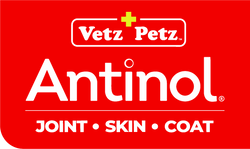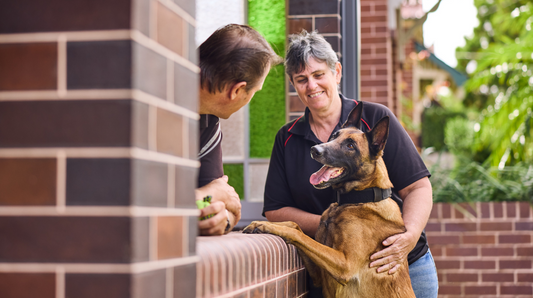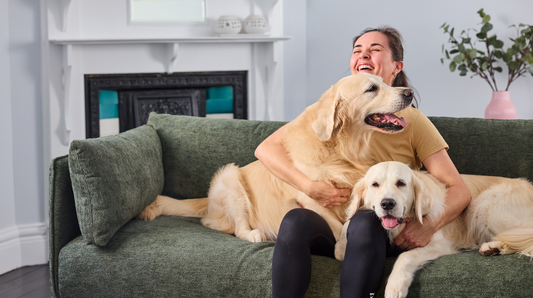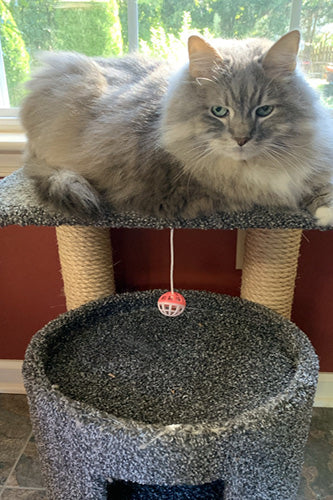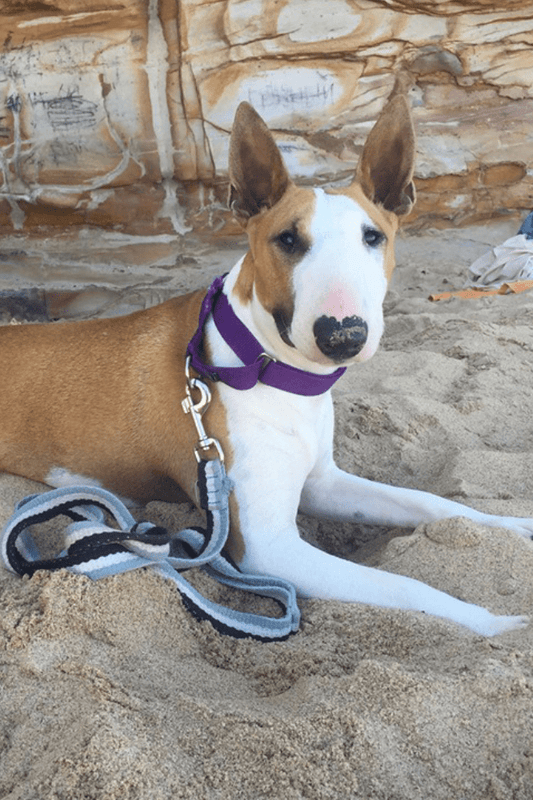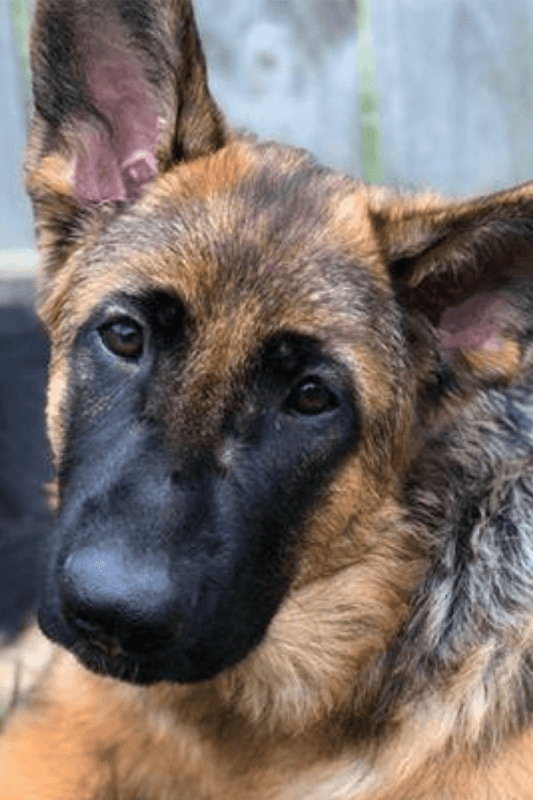If you’ve been following our spring skin series so far, you’ll know that at this time of year, our dogs can really suffer from skin problems caused by an overreaction to allergens like pollen and fleas. But it’s not just these external irritants that can impact our dog’s skin and make them more likely to have itchy, inflamed skin. Let’s look at some other factors that impact your dog’s skin health.
1. A Poor Skin Barrier
Your dog’s skin is its first defence against the outside world. It protects them against environmental irritants, bacteria, and allergens. But if this barrier is weak or compromised they can be susceptible to issues. Dogs with an impaired barrier may be more prone to dryness, irritation, and infections because their skin can't hang onto the moisture, and the weak surface allows potential irritants through. A poor skin barrier often appears to be flaky, dry, or greasy. You might also notice their coat looks dull due to the dry dandruffy skin.
You can think of it like a brick wall. A healthy skin barrier looks like a solid brick wall, with good strong mortar between each brick. But a poor skin barrier is more like a drystone wall. Crumbly and potentially full of gaps.

Ensure you don’t wash your dog too often, make sure to feed them a healthy diet, and give them a potent omega 3 supplement to give their skin barrier the boost it needs to stay strong.
2. The gut-skin axis - How bad tummies mean bad skin
Many studies have identified a strong connection between your dog’s gut health and their skin. This is known as the “gut-skin axis”. The “microbiome” of your dog’s gut refers to the billions of bacteria, viruses and other microorganisms that live and work in their digestive tract. They help your dog to digest their food, and they play a vital role in maintaining a healthy immune system. If the microbiome is out of balance this has a huge impact on your dog’s ability to absorb nutrients, and it impacts their immune system, as well as potentially increasing inflammation which has a knock-on effect on the skin health.
A healthy, complete diet will help to maintain the balance of microbe in their gut. You could also give them a pro or prebiotics to support the organisms living in their digestive tract. This is particularly important if they have been unwell or had a course of antibiotics.
3. Overgrooming
Have you noticed bald spots, fur staining, or areas where your dog’s fur is thinner than normal? This is often caused by overgrooming. It can be triggered by stress, boredom, or underlying pain such as joint pain with arthritis. Not only is this compulsion to groom frustrating for you and your dog, but it can also cause trauma to the skin and hair follicles, causing bald patches, skin infections, inflammation and hot spots.

Recognising and addressing the cause of overgrooming is vital to helping your dog return to a normal, healthy grooming pattern. Always speak to your vet if you are worried.
4. Undergrooming
It might sound strange, but it is often common to see both over AND under-grooming in your dog, particularly if they are struggling with a mobility concern such as arthritis. Some areas, such as their joints, are painful so they groom them to help soothe the pain. Other areas they can no longer reach to groom, it’s uncomfortable, and here, the problems with undergrooming begin.
It’s more often a problem in long-haired or double-coated breeds, but most breeds have the potential to develop matting and tangling of their fur. The mats trap moisture and bacteria close to the skin, which can lead to irritation, inflammation and even infection. Give your dog a helping hand and brush them regularly to help prevent these issues.
5. Stress and Anxiety
Stress and skin problems are interwoven with each other, and the two issues feed off of each other. When your dog is stressed or anxious, their levels of stress hormones such as cortisol and adrenaline increase. This can trigger an inflammatory response in the body, worsening inflammation and increasing the negative, uncomfortable symptoms of skin conditions such as atopic dermatitis.
But stress also causes an increase in anxious behaviours like chewing, licking and overgrooming, which in themselves, can cause a skin condition or worsen a current condition. It’s a negative feedback cycle. Stress causes inflammation, which worsens skin symptoms, causing further stress…and so on.

Learning to recognise when your dog is feeling anxious means you’ll be able to take action quickly, for a happier dog.
6. Skin fold dermatitis

Those gorgeous faces may be super smooshy and cute, but the excess skin folds in breeds like bulldogs, pugs, and shar-peis can be a recipe for skin disaster. The folds create a warm, moist environment, ideal for bacteria and yeast to flourish. This leads to redness, inflammation, and foul-smelling infections.
Keeping these folds clean and healthy is vital and requires regular, gentle cleaning. Your vet may recommend wipes, solutions or medicated creams to help keep problems at bay. And in severe cases, surgical correction of the folds may be necessary to reduce the risk of recurring infections.
7. Secondary infections and hotspots
Perhaps they’ve grazed themselves and now they’re licking their wounds, or they’re having an allergic reaction and they’re trying to satisfy that itch. Whatever the initial skin problem, there is always the potential for a secondary bacterial or yeast infection to take hold. These infections can worsen your dog's original condition, and cause intense itching, redness, and lesions. If left untreated, they can spread, complicate treatment of the original problem and ultimately result in a long-term skin condition, or painful, weeping hotspots that are hard to treat.
Look out for an unpleasant smell, discolored fur, oozing, or crusting on the skin. Regular vet visits, proper grooming, and medicated treatments can help prevent and manage infections.
So, whilst pollen and allergies are a major problem for many dogs skin at this time of year, they’re often only part of the picture. A poor skin barrier, an unbalanced gut, grooming habits, a stressful life, a smoosy face and the potential for secondary infections are just some of the other issues we need to consider. Phew!
By recognising these issues early, your vet can more effectively treat them and prevent the issue from spiraling out of control—resulting in happier, healthier, more comfortable dogs.
Antinol Plus and Skin Health
Antinol Plus is an incredible all-rounder when it comes to skin health. Its naturally powerful anti-inflammatory effects soothe angry, inflamed skin, helping your dog to feel more comfortable. Plus, the potent blend of fatty acids helps to strengthen the skin barrier, building protection against the outside world and maintaining strong, healthy skin and a super shiny coat.
Try Antinol for your dog with skin concerns this spring!
